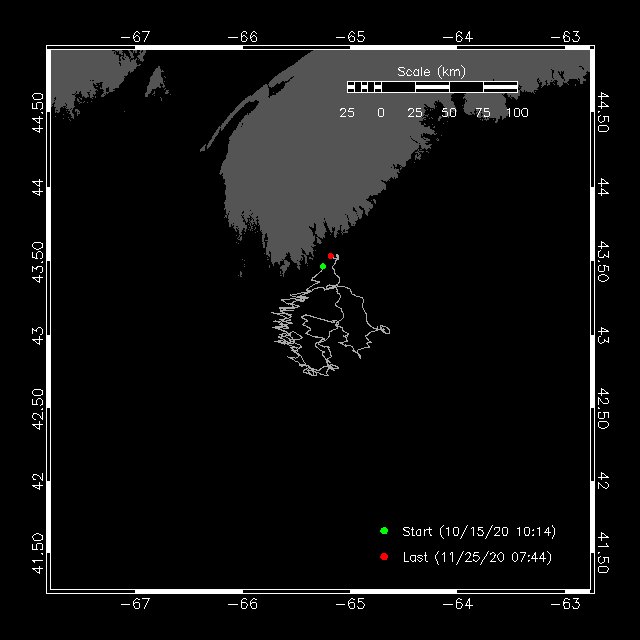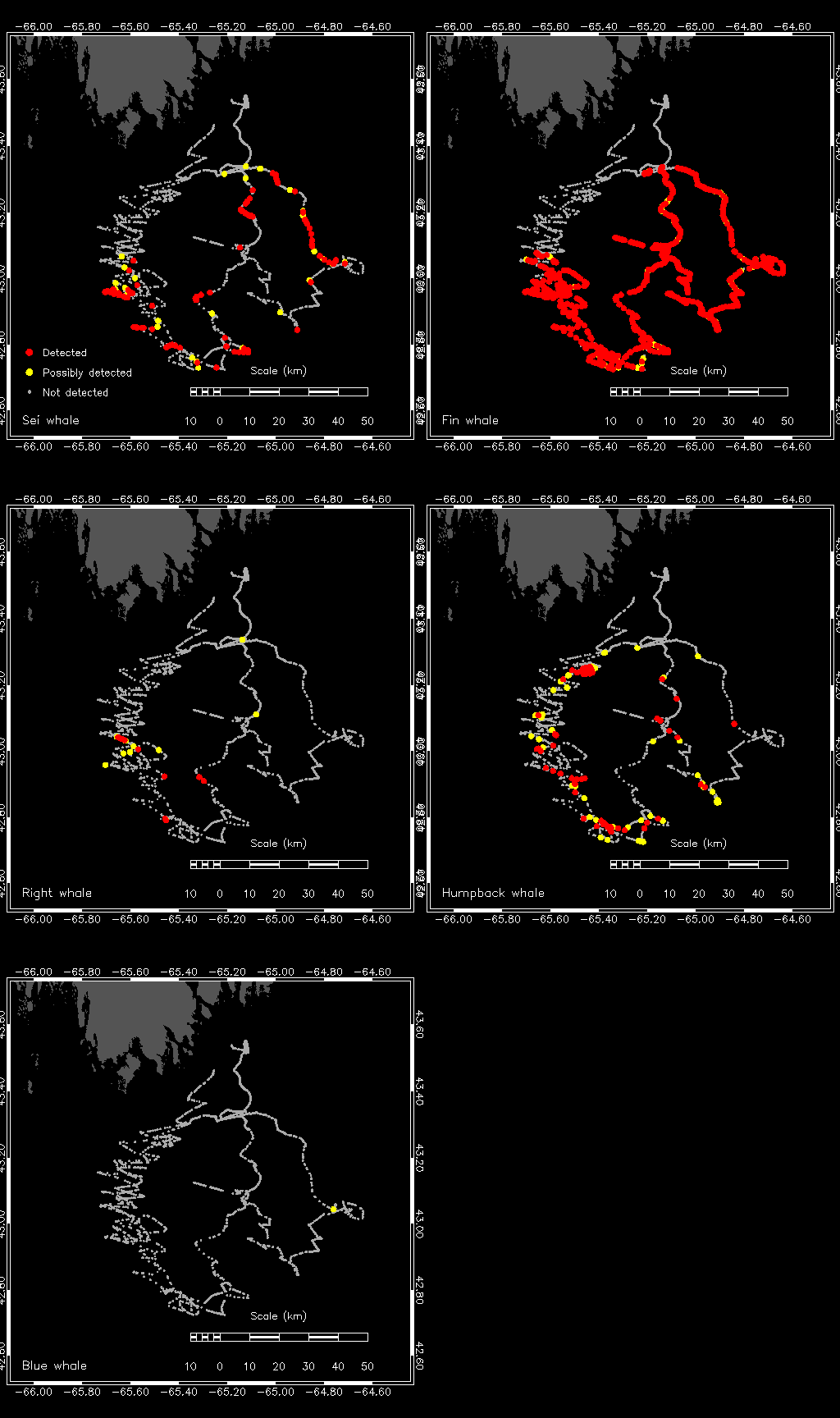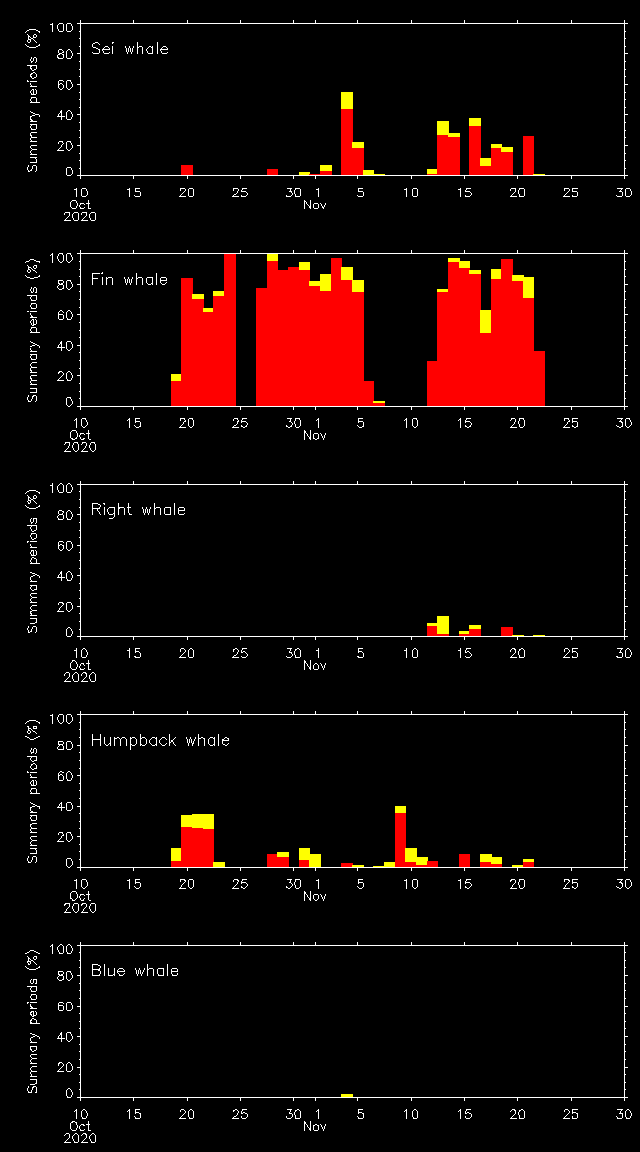Autonomous Real-time Marine Mammal Detections
Woods Hole Oceanographic Institution
Roseway Basin, Canada, October 2020
Study objectives
A Teledyne Webb Research Slocum glider equipped with passive acoustic listening device (DMON/LFDCS) was deployed in the southern Roseway Basin to study the habitat of the endangered North Atlantic right whale, as well as other baleen whales. This mission also provides reconnaissance for survey vessels and planes searching for right whales in the region.
Principal Investigators: Kim Davies (University of New Brunswick), Chris Taggart, Hansen Johnson, Richard Davis (Dalhousie University), Moira Brown (New England Aquarium/Canadian Whale Institute), and Mark Baumgartner (WHOI)
Analyst: Hansen Johnson (Dalhousie University)
Platform location:

Analyst-reviewed species occurrence maps:

Daily analyst review:
| | Detected |
| Possibly detected |
| Not detected |
Time series:

Diel plot:

Links to detailed information:
Automated detection data
DMON/LFDCS Diagnostics
Platform diagnostics
Questions
Please email Mark Baumgartner at mbaumgartner@whoi.edu. For a general desciption of the detection system and the autonomous platforms, visit dcs.whoi.edu.
Acknowledgements
The Dalhousie glider was expertly prepared by Adam Comeau, Jude van der Meer, Tyler Byrne, and Richard Davis (Dalhousie University). Support for the deployment and operation of the gliders was provided by the Marine Environmental Observation Prediction and Response Network (MEOPAR) Whales, Habitat and Listening Experiment (WHaLE), the Ocean Tracking Network (OTN), Fisheries and Oceans Canada (DFO), the World Wildlife Federation (WWF), and Canadian Steamship Lines (CSL). MEOPAR-WHaLE is supported by 20 collaborating organizations, listed here: meopar.ca/research/project/whale-whales-habitat-and-listening-experiment. Support for the development, integration, and testing of the glider DMON/LFDCS was provided by the U.S. Office of Naval Research and the NOAA National Marine Fisheries Service Advanced Sampling Technologies Working Group in collaboration with the Northeast Fisheries Science Center's Passive Acoustics Research Group (leader: Sofie Van Parijs).
Home



